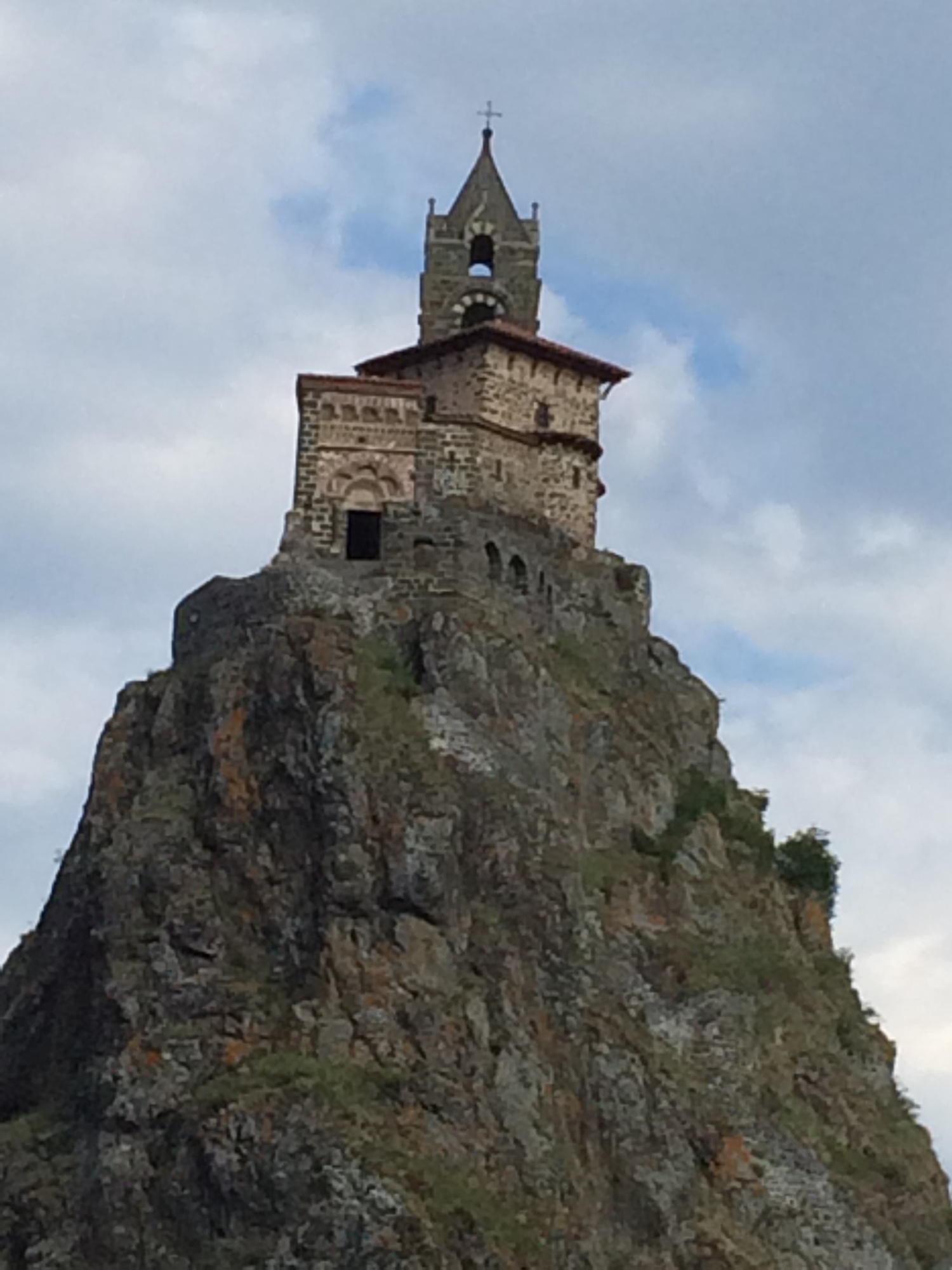Saint Michael
The thirty of us who are making this pilgrimage, with only four of us going all the way to Santiago, gathered in Lyon and took a motor coach to Le Puy-en-Velay. This is the starting point of the first pilgrimage made to Santiago and the route is call Via Podiensis. Both the name of the village and the name of the route are words that mean "podium." This is because of the relatively high volcanic peaks on which both the chapel and the cathedral are built. The Church of Saint-Michael is spectacularly perched on top of one of these volcanic pinnacles. It is almost 300 steps to climb to this edifice.
One of the first things I discovered after arriving is that the app and internet connection I have used so far to post these musings, no longer works. How things have changed since 950 when the local bishop made the first pilgrimage from here to the shrine of St. James. It took him over a year to make the journey and he took between four and five hundred people with him. During the height of the popularity of the pilgrimage during the Middle Ages, an average of 500,000 people a year made the trek. Now the average number is more like 30,000.
This cathedral took over 200 years to build
The cathedral from which this bishop presided took a little over 200 years to build. It, too, is well situated on another volcanic outcropping and takes over a 100 steps to reach. Both of these churches are placed where they acted as a defensive measure.
This pilgrim statue resides in the cathedral where it all began in 950
From the beginning pilgrims have not travelled the Camino alone. It would have been too dangerous. Besides, at the heart of spiritual practice is getting to know and love "the neighbor." This is true, as I have recently been saying, because our neighbor is us. Consequently, on this part of the pilgrimage, we have been requested to share a meal with a different person on the journey each time we eat.
The Rev. Peter Sills
Our leader, the Rev. Peter Sills, former vice-dean of Ely Cathedral has written a fictional piece that he is sharing with us each day. It is about a merchant Medard whose brother is an abbot of the monastery in Le Puy. He makes his pilgrimage in the Middle Ages.
The original pilgrimage to Santiago was made for both religious and spiritual purposes. Consequently, there were rituals to be performed along the way at the various churches and holy sites specified by the bishop. I'm sure the sites and rituals evolved. The implication of that for this pilgrimage we are on is that there are religious rituals conducted every day. Today we had high mass in the cathedral. The local bishop, though aged and ill, spoke to the congregation in both French and English. Afterwards, we had a guide speak with us about the construction of and the art in the cathedral.
We are making this pilgrimage in absolute luxury compared with those who made it before us. I'm thinking of how much of the time since the pilgrimage's inception this part of the world has been affected and afflicted with and by war - particularly "religious" wars.
We make our "camp" here for two more evenings though we journey out each day to experience parts of the "camino" route. We return to the Cathedral tomorrow evening to hear music preformed by the Ely Cathedral choir. We have heard them three times today and they are outstanding.
The geographical space where we are staying has been continuously occupied since the Bronze Age. Archaeological studies reveal that one or more of the huge stones used in the building of the cathedral were associated with a site dedicated to the worship of the Roman emperor sometime between the 1st and 3rd centuries.
All of which is to put into perspective one's life at the beginning of the journey. Very often we spend our time and energy making much of matters that matter not at all. The pilgrimage is designed to allow those who choose to take it to determine for themselves what matters most.
Much love,
Bill Kerley




